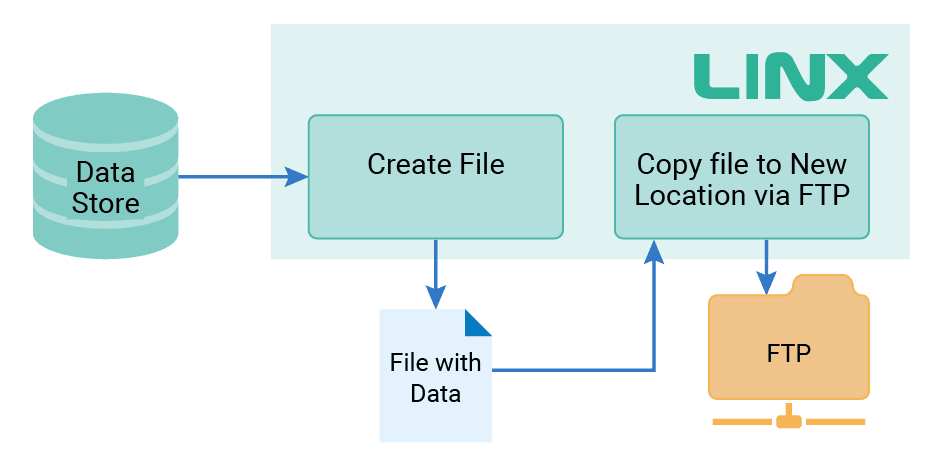Data automation
A common problem for large organisations is large amounts of data in a high-traffic setting. Linx provides more than just the conventional job schedulers (such as Windows Task Scheduler and Cron) with additional features and capabilities, allowing you to automate a variety of tasks and to collate those tasks into a sequence of longer-term operations.
Read the case study Data Migration.
What you can do with Linx
- Extract data and create data artifacts such as files.
- Use a wide variety of data transfer options.
- Schedule or trigger the transfer of files over networks.
- Interact with any files via file management and FTP functionality.
- Flexibly migrate data from any source to any target.
Common data transfer solutions
- Move files between file servers, FTP servers, and cloud storage.
- Integrate applications and data between local resources and cloud.
- Migrate data between different database technologies.
- High volume processing.
The developer experience
- Trigger or schedule files using Timer, Chron or Directory Watch.
- Multiple data transfer options (email, FTP, or message queues).
- Direct data transfer from database to database.
- Transfer options can be added in functions that can be kicked off by specific events or timers that operate on a schedule.
- Extract data and create data artifacts such as files.
- Advanced FTP functionality (file movement, directory management, FTP download /upload).
Extracting data and making it available via FTP
A simple example of automating data transfers is that data can be extracted from a database into a CSV file. The CSV can be fully configured in Linx to ensure exact requirements are met. Once created, the file is copied to a FTP server. This can all be done on a schedule, such as a specified time and date, on repeat. This process can be built, automated and hosted with Linx in minutes.


















